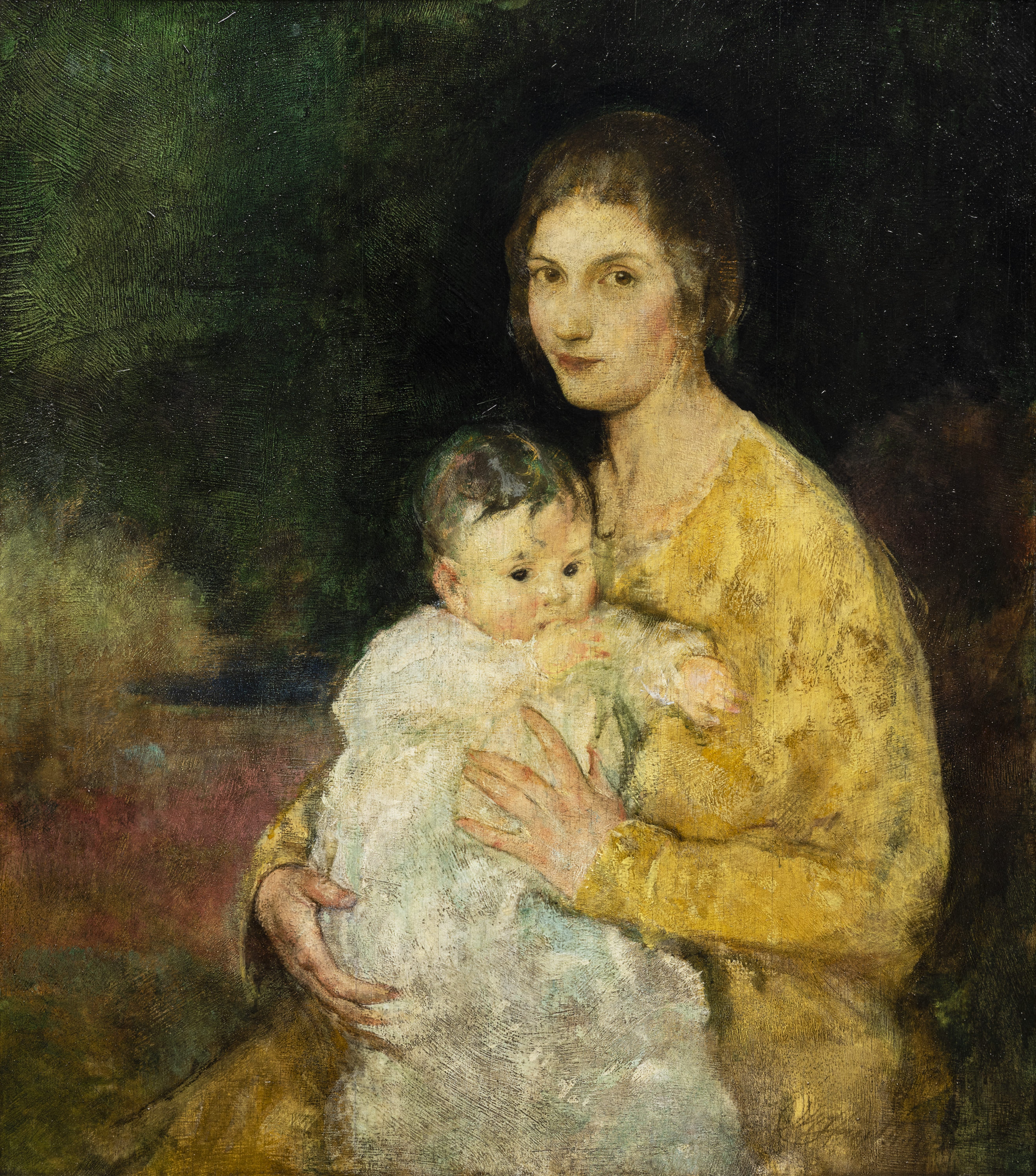Charles W. Hawthorne
(Lodi, Illinois, 1872 - 1930, Baltimore, Maryland)
Mother and Child
1908-1909
Oil on panel
33 7/8 x 30 in. (86.1 x 76.2 cm)
Collection of the Akron Art Museum
Bequest of Edwin C. Shaw
1955.31
More Information
A student of William Merritt Chase and an influential teacher in his own right, Charles Hawthorne worked in Provincetown, Massachusetts, for much of his career. Inspired by Renaissance painting, Hawthorne aspired to revitalize traditional artistic practices by using them to depict American subjects, notably his family and the rugged fisher folk who were his neighbors. The dark tones, carefully applied layers of glaze, and wood panel support that the artist used for Mother and Child reflects his admiration for Titian and other Venetian masters. The theme of the mother and child became prominent in Hawthorne’s work following the birth of his only son in 1908. The tender expressions of the figures suggest the artist’s interest in his subjects, while the triangle formed by the central figures shares affinities with historical depictions of the Madonna and Child.

